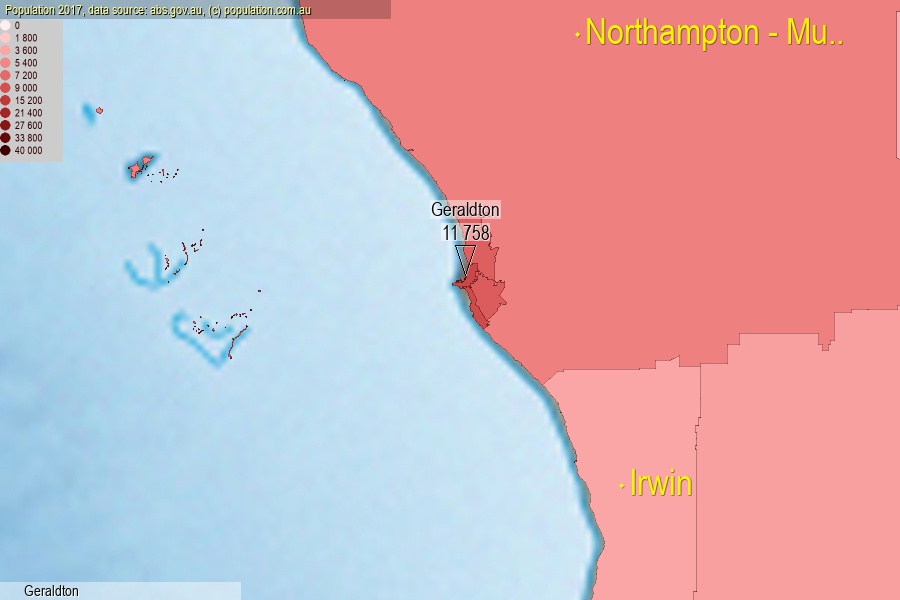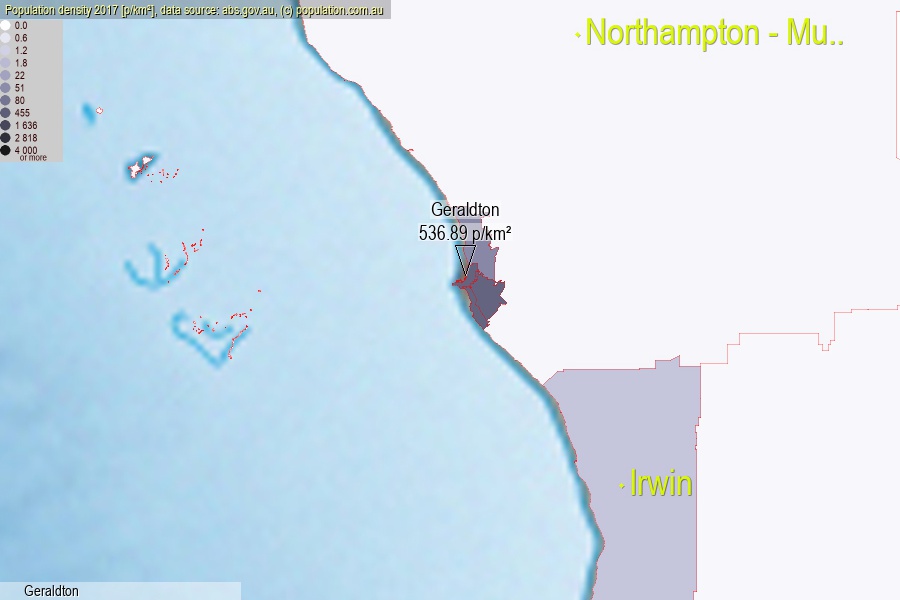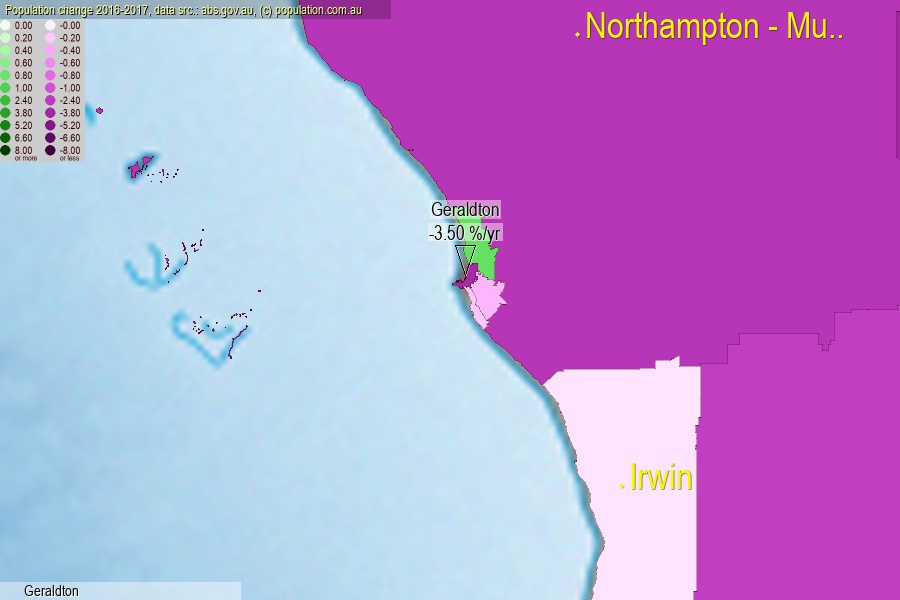 population.com.au
population.com.auLast official estimated population of Geraldton (as Statistical Area Level 2) was 11 758 people (on 2017-06-30)[2]. This was 0.05% of total Australian population and 0.454% of WA population. Area of Geraldton is 21.90 km², in this year population density was 536.89 p/km² . If population growth rate would be same as in period 2016-2017 (-3.5%/yr), Geraldton population in 2025 would be 8 839. [0]



Click to enlarge. Geraldton is located in the center of the images.
Population [people], population density [p./km²] and population change [%/year] [2]
View borders » (new window) [4]
[2001-2002] -0.79 %/Yr.
[2002-2003] -0.45 %/Yr.
[2003-2004] -0.52 %/Yr.
[2004-2005] -0.32 %/Yr.
[2005-2006] +0.12 %/Yr.
[2006-2007] -0.36 %/Yr.
[2007-2008] +0.06 %/Yr.
[2008-2009] -0.05 %/Yr.
[2009-2010] -0.13 %/Yr.
[2010-2011] -0.23 %/Yr.
[2011-2012] +0.16 %/Yr.
[2012-2013] +0.27 %/Yr.
[2013-2014] -0.89 %/Yr.
[2014-2015] -1.66 %/Yr.
[2015-2016] -2.33 %/Yr.
[2016-2017] -3.50 %/Yr.
[0] Calculated with linear interpolation from officially estimated population
[1] Read more about SA2 and Australian Statistical Geography Standard (ASGS) on abs.gov.au
[2] Population data from Australian Bureau of Statistics (Population and density: 2017; change: 2016-2017)
[3] Digital Boundaries: Australian Statistical Geography Standard (ASGS) 2016.
[4] Border coordinates are simplifyed using Ramer-Douglas-Peucker algorithm.